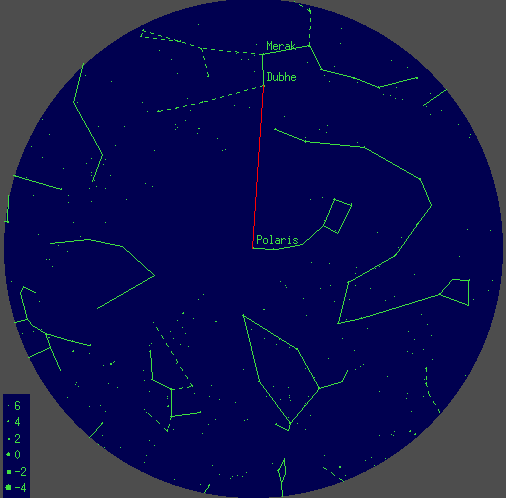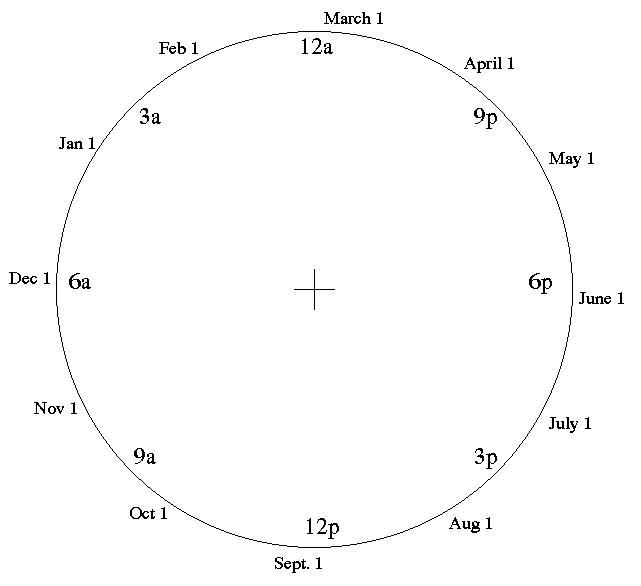
| MadSci Network: Astronomy |
The Earth spins around once on its axis once per day, and the Earth orbits around the Sun once per year. Suppose in June we saw a star at midnight that was in the exact opposite direction from us as the Sun. In December, the Earth would be on the other side of the Sun, so that star would appear right behind the sun... which would mean we would see it best at noon: it'd be below the horizon at midnight, just like the sun. In general, if you go out to look at the stars at the same time each night, the motion of the Earth around the Sun makes the stars appear to migrate from east to west slowly over the course of the year. But they also move rapidly from east to west over the course of a night, just like the sun does, since the Earth is spinning once per day.
We can use these two effects to make a time-calculation chart for the
stars. The following picture is a picture of the sky to the North at
midnight on March 1st, with the Pointer Stars of the Big Dipper and the
North Star (Polaris) labeled. Note the direction of the red line
connecting the three. That'll be the hour hand of our star-clock: it moves
counter-clockwise, revolving around Polaris once per day.

The following chart will help you subtract out the gradual motion of the
stars over the course of the year so you can figure out where in its
one-day rotation cycle the Earth is (I.e., what time it is.) Print out the
picture and turn it so that today's date is at the top of the circle. Draw
in the direction that the "hour hand" made by Merak, Dubhe, and Polaris on
the chart. The numbers on the inside of the circle (12a, 9p, 6p...) are
times: the "hour hand" points to the current time. Remember that this
"clock" goes counter-clockwise, and goes around once every 24
hours, not 12, and only gives the correct time if the current date is at
the top of the circle!

Example: Suppose it's October 1st. We turn the circle so Oct 1 is at the top. We look at the sky, and see that Dubhe and Merak are to the right of Polaris. We draw the arrow to the right on the circle (with Oct 1 pointing up!) and see that it's 4 a.m. (time to go to bed!)
You can tell the time to within half an hour this way, with practice. NOTE! This trick works in any time zone, but you have to add an hour to the time given by this clock during Daylight Savings Time! (remember, Spring Forward, Fall Back)
Try the links in the MadSci Library for more information on Astronomy.
Page generated by
MODERATOR_1.2b: Tools for Ask-An-Expert websites.
© 1997 Enigma Engines for a Better Universe:
We are forever combustible, ever compatible.